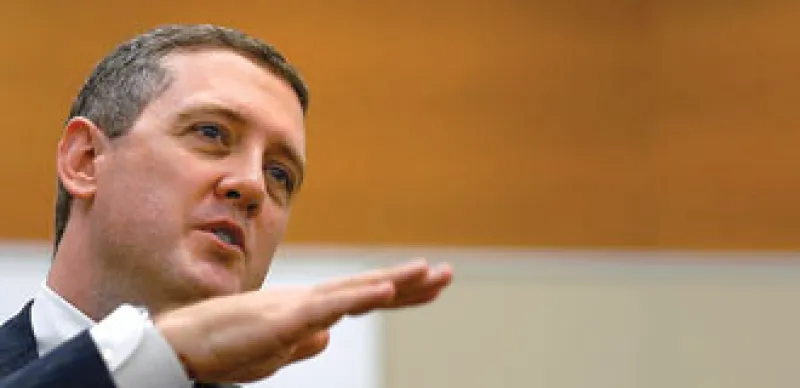Federal Reserve District of St. Louis president James Bullard expressed worry last month that the Fed’s "lack of clarity" about how it plans to address crisis levels of liquidity and reduce its bloated $2 trillion-plus balance sheet could be adding to market uncertainty — elevating both volatility and inflation expectations.
No kidding. Just a day after the central bank set out a fairly dovish exit road map in a statement following the September meeting of the Federal Open Market Committee, the bond markets were whipsawed by a hawkish opinion piece by Fed governor Kevin Warsh, who wrote, "Prudent risk management indicates that policy likely will need to begin normalization before it is obvious that it is necessary, possibly with greater force than is customary."
The markets are jumpy because uncertainty about the Fed’s exit strategy reflects divisions within the FOMC itself. There is little consensus about when to begin withdrawing the more than $1 trillion in excess reserves — compared with about $15 billion in the precrisis era — that the Fed created to fund its massive asset purchases following the near-meltdown of financial markets a year ago. Some fear that this gargantuan pile of excess reserves could fuel a bank lending spree that would drive the money supply into the heavens. As Warren Buffett said last summer: A trillion dollars of excess reserves here, a few trillion in deficit spending there, and pretty soon investors start thinking about inflation.
Most Fed officials remain sanguine about the inflation risk. Banks are unlikely to be lending out the reserves anyway, they contend. "Not only is loan demand weak, but the banks will remain capital-constrained for some time, which would limit the impact of the excess reserves being put to use," remarks one FOMC member. More important, most Fed insiders remain confident they will be able to "sterilize" the reserves long before inflation is ever generated, either by draining cash from the banks through large-scale term reverse repurchase agreements or by keeping them bottled up with the Fed, something the central bank can do easily now that it is able to pay interest on the reserves.
There are risks to the Fed’s benign scenario, though. "While it’s hard to see significant inflation in U.S. wages or the prices of domestic services given the current high unemployment, the dollar price of internationally traded commodities is another story," warns James Hamilton, an economist at the University of California at San Diego. "Inflation expectations may be showing up primarily in the exchange rate and commodity prices, and if there is a rapid depreciation of the dollar and commodity price inflation at a time when the U.S. economy remains weak, the Fed may find itself with a difficult decision."
That is where Bullard’s worries about the Fed’s communications strategy enter into the frame. Even if moves to begin draining excess liquidity before raising interest rates are still some time off, the FOMC needs to give investors a consistent message about its strategy if it wants to keep inflation expectations contained. In effect, the Fed is racing against the clock to agree on an exit plan and explain it to the market without doing harm to the economy — and before any loss of credibility undermines the dollar.
The communications muddle, however, may have one potential benefit. "The uncertainty, albeit probably more by default than design, about the Fed’s exit strategy and timing and scale of rate hikes may be helping the Fed at the margin to dampen the buildup in leveraged asset plays that could otherwise lead to asset bubbles over the coming quarters while it continues to provide accommodative interest rates for nonfinancial borrowers," notes Lou Crandall, chief economist at research shop ICAP-Wrightson.
Now that’s focusing on the positive.






